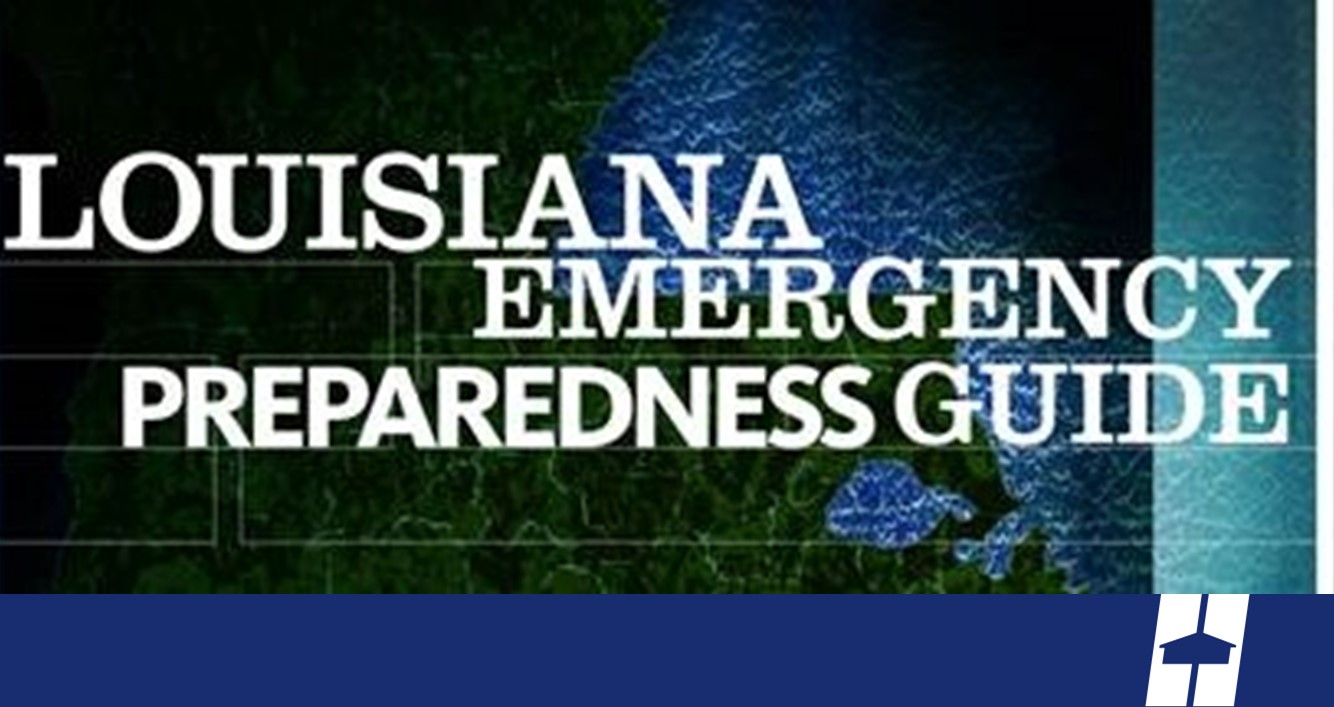Preparedness and hazard mitigation can save lives, protect property and lessen the impacts of future disasters. To reduce risk and ensure Louisiana citizens and communities are better prepared, this Guide is intended to help Louisiana residents benefit from the experience of past events and recommendations from experts in disaster preparation, prevention, response, recovery, and mitigation.
Each new storm season brings a renewed awareness of the need to be prepared and to continue to invest in efforts that make Louisiana more resilient, so Louisiana families and businesses are better able to withstand, bounce back quickly, and recover when an emergency or disaster event occurs. You need to know what you, your family, and your business partners and employees should do in the event of an emergency or disaster.
Important Terms You Should Know
- PARISH EMERGENCY OPERATIONS CENTER (EOC): The facility that provides coordination and control of all emergency response and recovery activities for the Parish during declared emergencies.
- EMERGENCY ALERT SYSTEM (EAS): A state-of-the-art digital system designed to give emergency information and instructions from Federal, State, and local authorities. The system is interfaced with the cable television system as well as radio and television stations. When activated, it broadcasts the latest information on weather reports, road conditions, evacuations, shelter locations, and reentry information.
- EVACUATION ORDER: The most important instruction you will receive from local government officials. When appropriate, the State of Louisiana Evacuation Plan goes into effect. This plan may require, depending on predicted impact, the evacuation of everyone in south Louisiana in vulnerable areas.
- EYE: The low-pressure center of a tropical cyclone or hurricane. Though the most intense area of the storm surrounds it, winds are normally calm and sometimes the sky clears.
- EYE WALL: The ring of thunderstorms that surrounds a storm’s eye. The heaviest rain, strongest winds, and worst turbulence are normally in the eyewall.
- FLASH FLOOD: A flood that occurs within a few hours (usually less than six [6]) of heavy or excessive rainfall or dam or levee failure.
- GALE: Sustained wind speeds from 39 to 54 miles per hour (mph) (34 to 47 knots).
- HURRICANE: A severe tropical cyclone with sustained winds over 74 mph (64 knots). KNOT(s): Unit of speed used in aviation and marine activities. One (1) knot is equal to 1.15 mph.
- STORM SURGE: A rise of the sea level along the shore that builds up as a storm (usually a hurricane) moves over water. It is a result of the winds of the storm and low atmospheric pressures.
- STORM TRACK: The path that a low-pressure area follows.
- TORNADO: A violently rotating column of air classified into three (3) main groups; weak – wind speeds up to 110 mph; strong – wind speeds 110 to 205 mph; and violent – wind speeds 205 to perhaps 320 mph.
- TROPICAL OR SUBTROPICAL DEPRESSION: Cyclones that have maximum sustained winds of 38 mph (33 knots) or less. These are referred to as low-pressure systems in public advisories and statements.
- TROPICAL STORM: Tropical cyclone that has maximum sustained winds from 39 to 73 mph (34 to 63 knots).
- WARNING: Issued when a particular weather or flood hazard is “imminent” or already occurring (e.g., tornado warning or flash flood warning). A warning is used for conditions posing a threat to life or property.
- WATCH: Forecast issued in advance to alert the public of the possibility of a particular weather-related hazard (tornado watch, flash flood watch). It is intended to provide enough lead time so those who need to set their plans in motion can do so.

